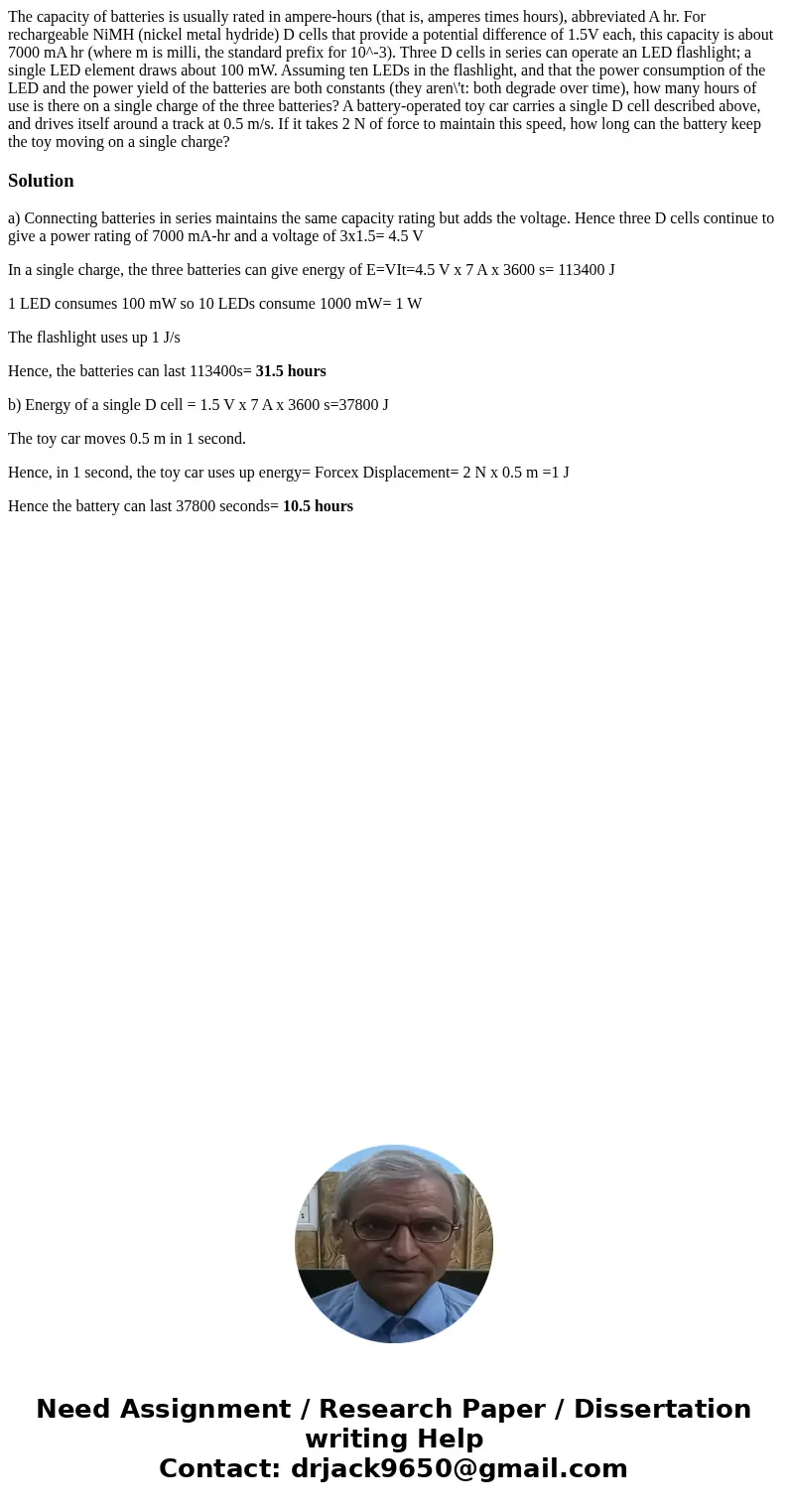The capacity of batteries is usually rated in amperehours th
The capacity of batteries is usually rated in ampere-hours (that is, amperes times hours), abbreviated A hr. For rechargeable NiMH (nickel metal hydride) D cells that provide a potential difference of 1.5V each, this capacity is about 7000 mA hr (where m is milli, the standard prefix for 10^-3). Three D cells in series can operate an LED flashlight; a single LED element draws about 100 mW. Assuming ten LEDs in the flashlight, and that the power consumption of the LED and the power yield of the batteries are both constants (they aren\'t: both degrade over time), how many hours of use is there on a single charge of the three batteries? A battery-operated toy car carries a single D cell described above, and drives itself around a track at 0.5 m/s. If it takes 2 N of force to maintain this speed, how long can the battery keep the toy moving on a single charge?
Solution
a) Connecting batteries in series maintains the same capacity rating but adds the voltage. Hence three D cells continue to give a power rating of 7000 mA-hr and a voltage of 3x1.5= 4.5 V
In a single charge, the three batteries can give energy of E=VIt=4.5 V x 7 A x 3600 s= 113400 J
1 LED consumes 100 mW so 10 LEDs consume 1000 mW= 1 W
The flashlight uses up 1 J/s
Hence, the batteries can last 113400s= 31.5 hours
b) Energy of a single D cell = 1.5 V x 7 A x 3600 s=37800 J
The toy car moves 0.5 m in 1 second.
Hence, in 1 second, the toy car uses up energy= Forcex Displacement= 2 N x 0.5 m =1 J
Hence the battery can last 37800 seconds= 10.5 hours

 Homework Sourse
Homework Sourse